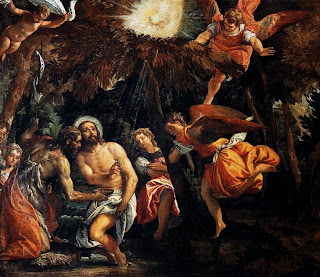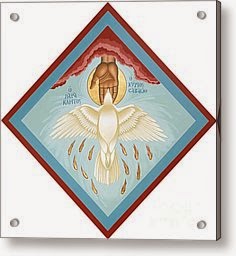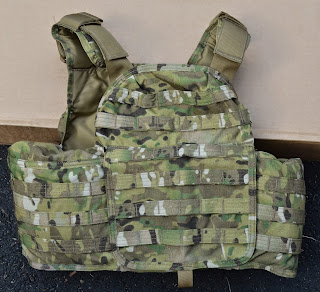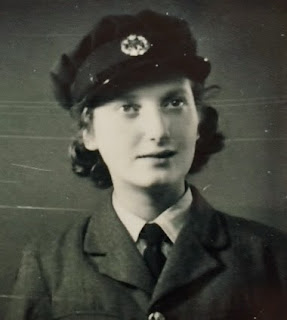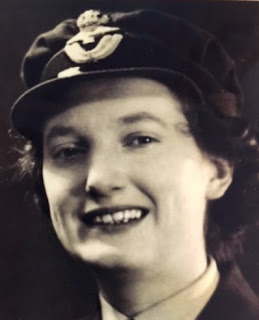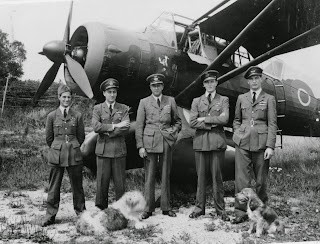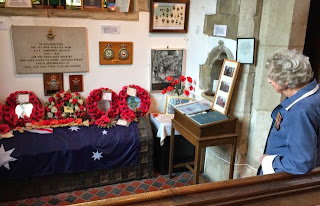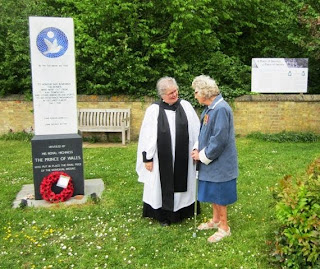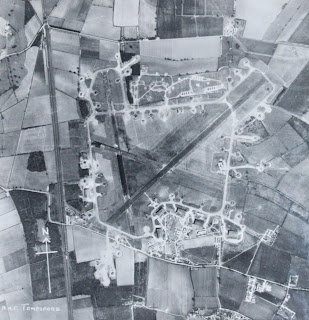When an author writes about people who actually lived, one of the challenges is finding out about the secondary characters; the people who interacted with the stars of the show but have left less of a trace. When writing my Eleanor of Aquitaine trilogy, I needed to find out about the life and circumstances of a lady called Isabel de Warenne, countess of Surrey and Warenne. She was a contemporary of Eleanor's and sometimes moved in her circles. Although she has left traces in the historical record, they're more hidden and fragmentary than Eleanor's, so it has involved some digging around.
I became interested in Isabel de Warenne because her second marriage was to Henry II's illegitimate half brother Hamelin, the latter of whom features as a strong secondary character in my Eleanor trilogy. As I wrote his story into the fabric of Henry and Eleanor's, it became obvious that his wife was a major part of that thread, and when I began digging, I came across some very useful details and plot opportunities.
Isabel de Warenne belonged to an illustrious line of Anglo Norman nobility with extensive lands in England and Normandy. Lewes Castle belonged to her family and they had the patronage of the Cluniac priory there founded by Isabel's grandfather. Castle Acre in Norfolk, Conisbrough Castle and Sandal in Northern England were also theirs. In Normandy the castles of Bellencombre and Mortemer were de Warenne strongholds. We don't know exactly when Isabel was born; dates are obscure, but a ball park of 1130 is not unreasonable to suggest. Her family were one of the first to adopt a distinctive personal blazon of blue and yellow chequers and were already using the chequered device on their seals by the mid 12th century.
Her father, William de Warenne joined the Second Crusade in 1146 and never returned. He was cut to pieces when the army of Louis VII of France was crossing the slopes of Mount Cadmos (now Mount Honaz) in Turkey and suffered a heavy mauling from the Saracens,
Isabel's widowed mother married again, to Patrick Earl of Salisbury. Isabel herself, now in her teens and a great marriage prize as the sole child of the Earl of Warenne, was married to William of Boulogne, the youngest son of King Stephen, who, was a child of about eleven years old. King Stephen at the time was at war with his cousin Matilda over the right to the English crown and Isabel would have grown to adulthood during a time fraught with anxiety and violence. The situation was eventually resolved when Stephen came to an agreement with Empress Matilda's son Henry, that the crown would pass to him when Stephen died. Stephen's sons would be required to step down from their claims to the throne. Stephen's older son Eustace, died during these negotiations (some say very fortuitously) thus removing one stumbling block from the agreement. During this delicate time of settling the matter of the succession, there seem to have been plots by both sides to be rid of the opposition. An assassination attempt on Henry II was foiled, and there may have been one on Isabel's young husband William, whose leg was broken in a fall from a horse.
Eventually, matters settled down. William abjured his right to the throne. Given a different set of circumstances, he may have become King, and Isabel would then have been queen of England, In the event, Stephen died and Isabel and William of Boulogne swore allegiance to the new king. Henry kept William on a tight leash and he was obviously watched just in case there was a chance that others would see him as a figurehead for rebellion. Did Isabel stay on her estates during the early years of Henry;s reign or play her part at court? We don't know, but she and her husband had no children and in my novel The Winter Crown I have thought it not inconceivable that some of her time was spent at court with the Queen to whom she could have imparted valuable information about the dealings of the English court prior to Henry's accession. She was also in the same position as Eleanor of having married a husband several years younger than herself.
Isabel and William were still childless in 1159 when he went on battle campaign with King Henry to Toulouse and died later that year of disease during the retreat. He was buried at the abbey of Montmorel in Poitou.
His death left Isabel an heiress of considerable wealth, still only in her twenties. In usual medieval fashion this state of affairs had to be remedied and Henry II thought she would be the perfect wife for his youngest brother, also called William like her first husband. What Isabel thought about this notion is not recorded, but if she had been at court in earlier years, she probably knew him and he her.
As it happened, the marriage never took place because Thomas Becket, Archbishop of Canterbury banned the match on the grounds that it was consanguineous. Usually when this happened - that the couple were too closely related within the proscribed degree - a dispensation could be obtained, but Becket, whose quarrel with Henry II was beginning to escalate made his position clear. There was to be no dispensation. Becket may have been making a stand because of Henry's dreadful behaviour in 1159/60 where he was behind the hauling of Isabel's sister in law Mary of Boulogne out of the convent where she had been a nun (an abbess no less) for ten years and forcing her to marry his nephew Matthew of Alsace.
There was nothing to be done. William went off empty handed to Normandy to visit his mother, and died soon afterwards - of a broken heart so the anti-Becket propagandists of the time were quick to say. However, no Angevin princeling ever died of such a complaint. One of the murderers of Becket, Richard Brito, had been one of William FitzEmpress's knights and as he struck his blow is supposed to have said 'And that is for the love of my lord William, brother of the King.' One suspects that as a household knight Brito would have been hoping for gifts of land and money from the largesse William would have access to by marrying Isabel. This now being denied to him, he was bound to be miffed!
Henry II was furious at being thwarted but there were always ways round. Becket had played the consanguinity card, but there was still another Angevin brother waiting in the wings - Hamelin, Henry's bastard half brother and he had no blood ties to Isabel that would prevent the marriage taking place. Thus Henry still managed to draw the de Warenne estates firmly into his own family enclave.
Hamelin and Isabel were married at Easter 1164. In March of that year a record appears in the pipe rolls for clothes for Isabel amounting to £41 10s 8d, presumably a wedding dress and trousseau. She was now the King's sister in law and also sister in law to Eleanor of Aquitaine. Did this bring the women closer to each other still? We don't know, but there is a later reason to think that the two branches of the family kept close company - some of the time at least. Isabel was no mere cipher and witnessed charters under her own seal during her widowhood and in her own court.
'coram Isabel comitissa Warennie domina nostra' heads one such charter. 'Before Isabel, our lady, Countess of Warenne' is the heading on one such charter.
We don't know from this far distance of time if Hamelin and Isabel's marriage was a happy one, but certainly in financial and business terms it appears to have been compatible, and was also a dynastic success. Isabel had not borne any children to her first husband William of Boulogne, but she and Hamelin were to have three girls and a boy. William, their son and heir, and daughters Isabel, Adela and Matilda. We don't have a specific birth order for the children, Hamelin took his wife's family name and became Hamelin de Warenne, Earl of Surrey and Warenne.
In 1176, Hamelin escorted his niece Joanna, daughter of Henry II to Sicily for her marriage. We don't know if Isabel was with him, but Joanna would have had female attendants, so it's possible her aunt Isabel accompanied her, although again it is one of those grey areas where novelists have the leeway to explore the spaces between the lines.
Some time in the 1170's Hamelin set out to build a fine castle for himself and his countess at Conisborough in South Yorkshire. The keep, recently refurbished by England Heritage is well worth visiting and features Isabel's own chamber near the top of the keep. You can see a cutaway diagram of the keep at Conisbrough on the Castle's English Heritage website. with Isabelle's chamber near the top of the keep and Hamelin's below. There was also a chapel dedicated to St. Philip and St. James.
One of the reasons I am positive that Isabel and Hamelin kept in close touch with their royal Angevin kin is because of an event that happened some time after 1180. One of the de Warenne daughters became pregnant by her cousin John Count of Mortain, later to become the infamous King John. We don't have a date for the event and we don't know which daughter. Only one chronicle tells us that a daughter of Hamelin de Warenne bore John's son, and there are no charters mentioning her name in connection with the birth to give us any sort of idea. Popular histories online make all sorts of claims for this one or that one, but basically it's all utter speculation because we just don't know. What we do know is that young John was sufficiently close to his de Warenne cousins to get one of them with child. While royal illegitimate children were often accepted as a matter of course, I suspect this particular pregnancy was regarded with a degree of dismay!
The child was christened Richard and can be found in various charters and in Henry III's pipe rolls. He is variously known as Richard of Dover, Richard of Chillham, Richard Fitzroy, and Richard de Warenne. There may be a clue to his mother in that Richard named his own daughter Isabel, but at the same time it was his mother in law's name (and his grandmother's), so there are no guarantees, however, it may be a pointer.
Another link that Isabel may have had with Eleanor of Aquitaine is Old Sarum which in the 12th century housed a royal palace and a cathedral. (It was the original Salisbury. The town and cathedral we now know as Salisbury was relocated from Old Sarum in the first quarter of the 13th century). Eleanor was kept here under sometimes strict house arrest several times in her 16 year imprisonment by Henry II. Isabel may have visited her here, or have had some access to her because her own half-brother was the Earl of Salisbury and her mother the dowager countess, and family connections counted for much. Again, it's one of those things we can't say for certain but it's one of those areas where as the novelist I can explore the possibility as a story line and know I am not going wildly outside the parameters of what is known.
To complete Isabel's story, she died on July 12th 1203, a year after her husband Hamelin and 9 months before Eleanor herself died at Fontevraud Abbey. Isabel was buried at Lewes Priory beside Hamelin and although their graves have been lost over the centuries, their bones are still there somewhere and near each other.
Since William Marshal and his family are my specialist subject I was interested to discover that Isabel's mother Adela was William Marshal's aunt by marriage, and her son William, Isabel's half-brother, was the Marshal's cousin. There is a further link in that Hamelin and Isabel's son William, later married William Marshal's eldest daughter Mahelt when her first husband died in 1225.
When you begin looking, everything is connected to everything else!
Selected Sources:
Early Yorkshire Charters Volume 8 edited by William Farrer and Charles Travis Clay - Cambridge University Press
Noblewomen Aristocracy and Power in the 12th century Anglo Norman Realm by Susan M. Johns. Manchester University Press
Thomas Becket by John Guy - Penguin
Blog article by Elizabeth Chadwick Hamelin de Warenne
Online Dictionary of National Biography - article by Susan M. Johns
The Image of Aristocracy in Britain 1o00-1300 by David Crouch
Elizabeth Chadwick is a best selling, multi-award winning author of fiction set in the Middle Ages. She is currently completing The Autumn Throne, the 3rd book in trilogy of novels about Eleanor of Aquitaine - and featuring among its cast Isabel and Hamelin de Warrene and their children.
I became interested in Isabel de Warenne because her second marriage was to Henry II's illegitimate half brother Hamelin, the latter of whom features as a strong secondary character in my Eleanor trilogy. As I wrote his story into the fabric of Henry and Eleanor's, it became obvious that his wife was a major part of that thread, and when I began digging, I came across some very useful details and plot opportunities.
Isabel de Warenne belonged to an illustrious line of Anglo Norman nobility with extensive lands in England and Normandy. Lewes Castle belonged to her family and they had the patronage of the Cluniac priory there founded by Isabel's grandfather. Castle Acre in Norfolk, Conisbrough Castle and Sandal in Northern England were also theirs. In Normandy the castles of Bellencombre and Mortemer were de Warenne strongholds. We don't know exactly when Isabel was born; dates are obscure, but a ball park of 1130 is not unreasonable to suggest. Her family were one of the first to adopt a distinctive personal blazon of blue and yellow chequers and were already using the chequered device on their seals by the mid 12th century.
 |
| seal of John de Warenne, Isabel and Hamelin's grandson: 13th century |
Her father, William de Warenne joined the Second Crusade in 1146 and never returned. He was cut to pieces when the army of Louis VII of France was crossing the slopes of Mount Cadmos (now Mount Honaz) in Turkey and suffered a heavy mauling from the Saracens,
Isabel's widowed mother married again, to Patrick Earl of Salisbury. Isabel herself, now in her teens and a great marriage prize as the sole child of the Earl of Warenne, was married to William of Boulogne, the youngest son of King Stephen, who, was a child of about eleven years old. King Stephen at the time was at war with his cousin Matilda over the right to the English crown and Isabel would have grown to adulthood during a time fraught with anxiety and violence. The situation was eventually resolved when Stephen came to an agreement with Empress Matilda's son Henry, that the crown would pass to him when Stephen died. Stephen's sons would be required to step down from their claims to the throne. Stephen's older son Eustace, died during these negotiations (some say very fortuitously) thus removing one stumbling block from the agreement. During this delicate time of settling the matter of the succession, there seem to have been plots by both sides to be rid of the opposition. An assassination attempt on Henry II was foiled, and there may have been one on Isabel's young husband William, whose leg was broken in a fall from a horse.
Eventually, matters settled down. William abjured his right to the throne. Given a different set of circumstances, he may have become King, and Isabel would then have been queen of England, In the event, Stephen died and Isabel and William of Boulogne swore allegiance to the new king. Henry kept William on a tight leash and he was obviously watched just in case there was a chance that others would see him as a figurehead for rebellion. Did Isabel stay on her estates during the early years of Henry;s reign or play her part at court? We don't know, but she and her husband had no children and in my novel The Winter Crown I have thought it not inconceivable that some of her time was spent at court with the Queen to whom she could have imparted valuable information about the dealings of the English court prior to Henry's accession. She was also in the same position as Eleanor of having married a husband several years younger than herself.
Isabel and William were still childless in 1159 when he went on battle campaign with King Henry to Toulouse and died later that year of disease during the retreat. He was buried at the abbey of Montmorel in Poitou.
His death left Isabel an heiress of considerable wealth, still only in her twenties. In usual medieval fashion this state of affairs had to be remedied and Henry II thought she would be the perfect wife for his youngest brother, also called William like her first husband. What Isabel thought about this notion is not recorded, but if she had been at court in earlier years, she probably knew him and he her.
As it happened, the marriage never took place because Thomas Becket, Archbishop of Canterbury banned the match on the grounds that it was consanguineous. Usually when this happened - that the couple were too closely related within the proscribed degree - a dispensation could be obtained, but Becket, whose quarrel with Henry II was beginning to escalate made his position clear. There was to be no dispensation. Becket may have been making a stand because of Henry's dreadful behaviour in 1159/60 where he was behind the hauling of Isabel's sister in law Mary of Boulogne out of the convent where she had been a nun (an abbess no less) for ten years and forcing her to marry his nephew Matthew of Alsace.
There was nothing to be done. William went off empty handed to Normandy to visit his mother, and died soon afterwards - of a broken heart so the anti-Becket propagandists of the time were quick to say. However, no Angevin princeling ever died of such a complaint. One of the murderers of Becket, Richard Brito, had been one of William FitzEmpress's knights and as he struck his blow is supposed to have said 'And that is for the love of my lord William, brother of the King.' One suspects that as a household knight Brito would have been hoping for gifts of land and money from the largesse William would have access to by marrying Isabel. This now being denied to him, he was bound to be miffed!
Henry II was furious at being thwarted but there were always ways round. Becket had played the consanguinity card, but there was still another Angevin brother waiting in the wings - Hamelin, Henry's bastard half brother and he had no blood ties to Isabel that would prevent the marriage taking place. Thus Henry still managed to draw the de Warenne estates firmly into his own family enclave.
Hamelin and Isabel were married at Easter 1164. In March of that year a record appears in the pipe rolls for clothes for Isabel amounting to £41 10s 8d, presumably a wedding dress and trousseau. She was now the King's sister in law and also sister in law to Eleanor of Aquitaine. Did this bring the women closer to each other still? We don't know, but there is a later reason to think that the two branches of the family kept close company - some of the time at least. Isabel was no mere cipher and witnessed charters under her own seal during her widowhood and in her own court.
'coram Isabel comitissa Warennie domina nostra' heads one such charter. 'Before Isabel, our lady, Countess of Warenne' is the heading on one such charter.
 |
| Example of 12th century silk textile from Sicily. Possibly Isabelle's wedding dress was made of fabric like this. She and Hamelin may have visited Sicily in 1176. V&A |
In 1176, Hamelin escorted his niece Joanna, daughter of Henry II to Sicily for her marriage. We don't know if Isabel was with him, but Joanna would have had female attendants, so it's possible her aunt Isabel accompanied her, although again it is one of those grey areas where novelists have the leeway to explore the spaces between the lines.
Some time in the 1170's Hamelin set out to build a fine castle for himself and his countess at Conisborough in South Yorkshire. The keep, recently refurbished by England Heritage is well worth visiting and features Isabel's own chamber near the top of the keep. You can see a cutaway diagram of the keep at Conisbrough on the Castle's English Heritage website. with Isabelle's chamber near the top of the keep and Hamelin's below. There was also a chapel dedicated to St. Philip and St. James.
| Conisbrough today |
| Isabel's chamber, complete with fireplace |
| An artis's impression of the chamvber brightened up and lived in. |
| Access onto the battlements from the chamber |
The child was christened Richard and can be found in various charters and in Henry III's pipe rolls. He is variously known as Richard of Dover, Richard of Chillham, Richard Fitzroy, and Richard de Warenne. There may be a clue to his mother in that Richard named his own daughter Isabel, but at the same time it was his mother in law's name (and his grandmother's), so there are no guarantees, however, it may be a pointer.
Another link that Isabel may have had with Eleanor of Aquitaine is Old Sarum which in the 12th century housed a royal palace and a cathedral. (It was the original Salisbury. The town and cathedral we now know as Salisbury was relocated from Old Sarum in the first quarter of the 13th century). Eleanor was kept here under sometimes strict house arrest several times in her 16 year imprisonment by Henry II. Isabel may have visited her here, or have had some access to her because her own half-brother was the Earl of Salisbury and her mother the dowager countess, and family connections counted for much. Again, it's one of those things we can't say for certain but it's one of those areas where as the novelist I can explore the possibility as a story line and know I am not going wildly outside the parameters of what is known.
To complete Isabel's story, she died on July 12th 1203, a year after her husband Hamelin and 9 months before Eleanor herself died at Fontevraud Abbey. Isabel was buried at Lewes Priory beside Hamelin and although their graves have been lost over the centuries, their bones are still there somewhere and near each other.
Since William Marshal and his family are my specialist subject I was interested to discover that Isabel's mother Adela was William Marshal's aunt by marriage, and her son William, Isabel's half-brother, was the Marshal's cousin. There is a further link in that Hamelin and Isabel's son William, later married William Marshal's eldest daughter Mahelt when her first husband died in 1225.
When you begin looking, everything is connected to everything else!
Selected Sources:
Early Yorkshire Charters Volume 8 edited by William Farrer and Charles Travis Clay - Cambridge University Press
Noblewomen Aristocracy and Power in the 12th century Anglo Norman Realm by Susan M. Johns. Manchester University Press
Thomas Becket by John Guy - Penguin
Blog article by Elizabeth Chadwick Hamelin de Warenne
Online Dictionary of National Biography - article by Susan M. Johns
The Image of Aristocracy in Britain 1o00-1300 by David Crouch
Elizabeth Chadwick is a best selling, multi-award winning author of fiction set in the Middle Ages. She is currently completing The Autumn Throne, the 3rd book in trilogy of novels about Eleanor of Aquitaine - and featuring among its cast Isabel and Hamelin de Warrene and their children.




















































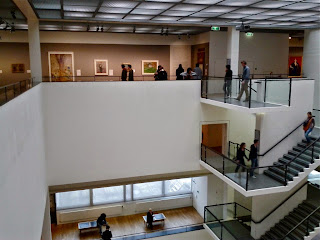






















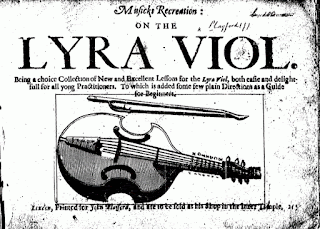

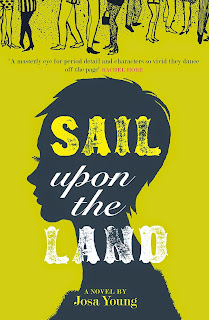










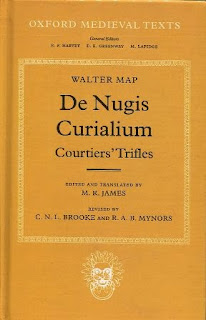


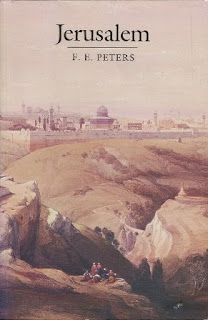
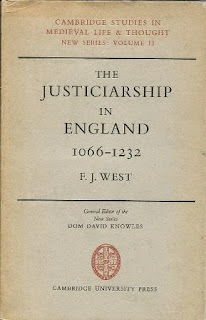
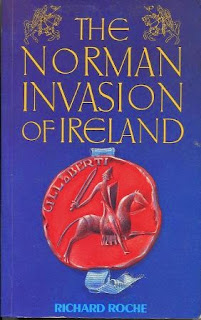
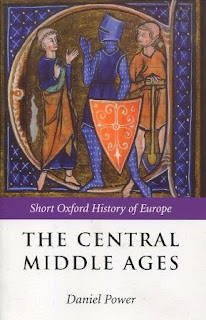
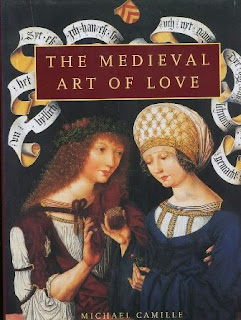

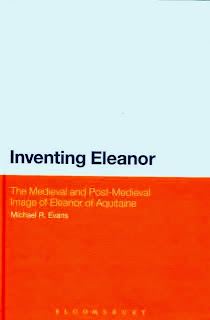
.jpg&container=blogger&gadget=a&rewriteMime=image%2F*)


.jpg&container=blogger&gadget=a&rewriteMime=image%2F*)

.jpg&container=blogger&gadget=a&rewriteMime=image%2F*)








